Center for Financial Economics: Louis J. Maccini Professorship
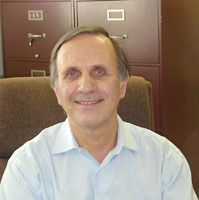 LOUIS J. MACCINI joined the Department of Economics at The Johns Hopkins University in 1969, chairing the department from 1992 to 2007. Beginning in 2000, he headed the effort to create the Center for Financial Economics; his vision was to create a place where teaching and research in finance would occur in an economics department in a college of Arts and Sciences rather than in a business school. Dr. Maccini’s recent research has explored such issues as the role of inventories in the business cycle, how monetary policy affects inventory investment, whether recent technological innovations such as computerization have enabled businesses to more effectively manage their inventory positions, and whether this phenomenon contributed to the decline in the volatility of GDP growth since the early 1980s. He was selected a fellow of the International Society for Inventory Research in 2004 and served as its president from 2010-12. The Louis J. Maccini Professorship is a fitting tribute to an academic leader whose vision has shaped the unique mission of the Center for Financial Economics.
LOUIS J. MACCINI joined the Department of Economics at The Johns Hopkins University in 1969, chairing the department from 1992 to 2007. Beginning in 2000, he headed the effort to create the Center for Financial Economics; his vision was to create a place where teaching and research in finance would occur in an economics department in a college of Arts and Sciences rather than in a business school. Dr. Maccini’s recent research has explored such issues as the role of inventories in the business cycle, how monetary policy affects inventory investment, whether recent technological innovations such as computerization have enabled businesses to more effectively manage their inventory positions, and whether this phenomenon contributed to the decline in the volatility of GDP growth since the early 1980s. He was selected a fellow of the International Society for Inventory Research in 2004 and served as its president from 2010-12. The Louis J. Maccini Professorship is a fitting tribute to an academic leader whose vision has shaped the unique mission of the Center for Financial Economics.
Center for Financial Economics: Carl Christ Professorship
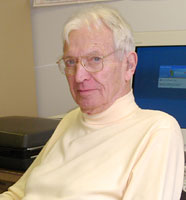 CARL CHRIST began his career as a physicist, working on the Manhattan Project and teaching physics at Princeton. His legacy, however, is in economics. He joined the faculty at The Johns Hopkins University in 1950, leaving for a six-year stint at the University of Chicago, then returning to Hopkins in 1961. Dr. Christ taught in the Department of Economics at Hopkins for almost 50 years, serving as departmental chair for seven of those years. He is the author of three books, editor of one, and has over 40 articles in journals and books, as well as more than 60 other publications. His major research interests are econometric methods, especially the testing and evaluation of econometric models; monetary and fiscal policy, especially government budget restraint; and the history of econometrics. Recipient of Hopkins’ George Owen Teaching Award, Dr. Christ is a member of Phi Beta Kappa and a fellow of the Econometric Society and of the American Statistical Association. The Carl Christ Professorship honors the legacy of a man who has been an inspirational teacher and mentor to generations of Johns Hopkins students.
CARL CHRIST began his career as a physicist, working on the Manhattan Project and teaching physics at Princeton. His legacy, however, is in economics. He joined the faculty at The Johns Hopkins University in 1950, leaving for a six-year stint at the University of Chicago, then returning to Hopkins in 1961. Dr. Christ taught in the Department of Economics at Hopkins for almost 50 years, serving as departmental chair for seven of those years. He is the author of three books, editor of one, and has over 40 articles in journals and books, as well as more than 60 other publications. His major research interests are econometric methods, especially the testing and evaluation of econometric models; monetary and fiscal policy, especially government budget restraint; and the history of econometrics. Recipient of Hopkins’ George Owen Teaching Award, Dr. Christ is a member of Phi Beta Kappa and a fellow of the Econometric Society and of the American Statistical Association. The Carl Christ Professorship honors the legacy of a man who has been an inspirational teacher and mentor to generations of Johns Hopkins students.
Alsoph H. Corwin Chair in Chemistry
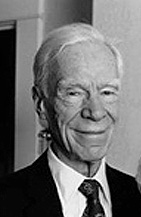 ALSOPH H. CORWIN joined the Johns Hopkins faculty in 1932. For more than four decades he served as a teacher and mentor, all the while making significant contributions to several branches of chemistry. His research led to a clearer understanding of photosynthesis and the chemistry of chlorophyll and hemoglobin. Dr. Corwin’s work led to the development of a chemical method for restoring highly corroded copper antiquities and to the design of sensitive microbalances.
ALSOPH H. CORWIN joined the Johns Hopkins faculty in 1932. For more than four decades he served as a teacher and mentor, all the while making significant contributions to several branches of chemistry. His research led to a clearer understanding of photosynthesis and the chemistry of chlorophyll and hemoglobin. Dr. Corwin’s work led to the development of a chemical method for restoring highly corroded copper antiquities and to the design of sensitive microbalances.
Dr. Corwin’s active sense of inquiry led him to the study of food and environmental factors related to health, for which he was awarded the Jonathan Forman Medal of the American Academy of Environmental Medicine. He retired in 1972, and in 1987 the university awarded him an honorary degree. In 1989 his former students came to Hopkins from around the world to honor him, launching the drive to create this professorship in his honor. Professor Corwin died in 2007.
Robert Bond Welch, M.D. Professorship in Ophthalmology
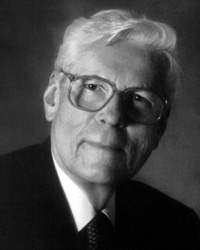 Born and raised in Maryland, ROBERT BOND WELCH, Med 1953, is the son of an Annapolis ophthalmologist and became a leader in that field in Maryland and internationally. Dr. Welch completed his pre-medical training at Princeton and obtained his MD degree from The Johns Hopkins University in 1953. He completed his internship and residency at the Wilmer Eye Institute. Over the next 40 years, Dr. Welch established himself as a leading figure in retinal care, clinical research, and training. At Wilmer, he co-directed the Wilmer Retina Service from 1959 to 1985, and he served as chairman of ophthalmology at the Greater Baltimore Medical Center from 1985 to 1991. He maintains a private practice in Baltimore and Annapolis. He has been active in the American Academy of Ophthalmology, the Macula Society, the Retina Society, and the American Board of Ophthalmology. Studies of pars planitis, sickle cell hemoglobin C disease, and intraocular Toxacara Canis are some of Dr. Welch’s clinical research interests. He was also the developer of improved “scleral buckle” surgical techniques. To many, Dr. Welch is best known as a teacher; he is past-president of the Wilmer Residents Association and is a current member of the Wilmer Advisory Council. His love of history is well-known as he is the author of The Wilmer Ophthalmological Institute, 1925–2000. He is also a tireless advocate of Johns Hopkins and was named a Distinguished Alumnus of The Johns Hopkins University in 2001.
Born and raised in Maryland, ROBERT BOND WELCH, Med 1953, is the son of an Annapolis ophthalmologist and became a leader in that field in Maryland and internationally. Dr. Welch completed his pre-medical training at Princeton and obtained his MD degree from The Johns Hopkins University in 1953. He completed his internship and residency at the Wilmer Eye Institute. Over the next 40 years, Dr. Welch established himself as a leading figure in retinal care, clinical research, and training. At Wilmer, he co-directed the Wilmer Retina Service from 1959 to 1985, and he served as chairman of ophthalmology at the Greater Baltimore Medical Center from 1985 to 1991. He maintains a private practice in Baltimore and Annapolis. He has been active in the American Academy of Ophthalmology, the Macula Society, the Retina Society, and the American Board of Ophthalmology. Studies of pars planitis, sickle cell hemoglobin C disease, and intraocular Toxacara Canis are some of Dr. Welch’s clinical research interests. He was also the developer of improved “scleral buckle” surgical techniques. To many, Dr. Welch is best known as a teacher; he is past-president of the Wilmer Residents Association and is a current member of the Wilmer Advisory Council. His love of history is well-known as he is the author of The Wilmer Ophthalmological Institute, 1925–2000. He is also a tireless advocate of Johns Hopkins and was named a Distinguished Alumnus of The Johns Hopkins University in 2001.
Dr. Arnall Patz Endowed Professorship for the Lions Low Vision Center
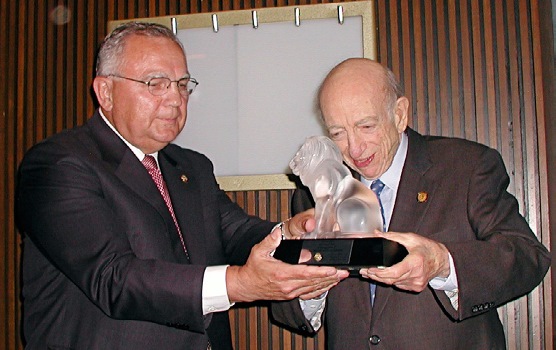 Dr. ARNALL PATZ was a world-renowned scientist, clinician, teacher, and administrator. Through his work, he immeasurably brightened the lives of everyone he met. Beginning in 1950, while still an ophthalmic resident in Washington, DC, Dr. Patz first noticed an association between incubators and retinopathy of prematurity, a leading cause of infant blindness. In one of the first clinical trials in all of medicine, he followed premature babies who were routinely given high concentrations of oxygen and others who were given lower doses. Rebuffed by funding agencies, which thought the proposal unscientific and possibly dangerous, Dr. Patz conducted the clinical trial without federal funding. His discovery has been credited with a sixty percent reduction in childhood blindness in the country. For his groundbreaking discovery, he received the prestigious Albert Lasker Medical Research Award, presented to him by Helen Keller in 1956.
Dr. ARNALL PATZ was a world-renowned scientist, clinician, teacher, and administrator. Through his work, he immeasurably brightened the lives of everyone he met. Beginning in 1950, while still an ophthalmic resident in Washington, DC, Dr. Patz first noticed an association between incubators and retinopathy of prematurity, a leading cause of infant blindness. In one of the first clinical trials in all of medicine, he followed premature babies who were routinely given high concentrations of oxygen and others who were given lower doses. Rebuffed by funding agencies, which thought the proposal unscientific and possibly dangerous, Dr. Patz conducted the clinical trial without federal funding. His discovery has been credited with a sixty percent reduction in childhood blindness in the country. For his groundbreaking discovery, he received the prestigious Albert Lasker Medical Research Award, presented to him by Helen Keller in 1956.
Dr. Patz joined Wilmer’s full-time faculty in 1970 as the inaugural Seeing Eye Research Professor. While at Wilmer, he founded the Retinal Vascular Center, which pioneered the management and treatment of diabetic retinopathy. During this time, he continued to make important discoveries about diseases caused by abnormal growth of blood vessels in the eye and helped to develop one of the first argon lasers for treating diabetic retinopathy and age-related macular degeneration. He then went on to become Wilmer’s fourth chairman from 1979-1989.
Dr. Patz has always had a strong connection with the Lions, having been inspired by Helen Keller who once told him, “If you want anything done, call the Lions.” He partnered with the Lions of Multiple District 22 in a relationship that has blossomed to include the naming of the Lions Low Vision Center at Wilmer and the Arnall Patz Clinical Fellow. The Lions Low Vision Center at Wilmer is now a multidisciplinary team of doctors and rehabilitative specialists collaborating to restore and improve day-to-day functions—including reading, driving, shopping, and other important activities—lost to chronic visual impairment.
After Patz died in 2010, many who had known, worked with, or been treated by him, including the Lions, rallied to endow the Dr. Arnall Patz Professorship for the Lions Low Vision Center.
CHAIRHOLDER TO BE NAMED
Breast Cancer Research Chair in Oncology
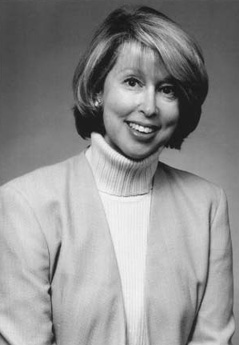 HARRIET LEGUM translated her personal experience with cancer into an opportunity to help others. After successful treatment, she took the helm of a campaign to raise significant funding for breast cancer research at Hopkins. Mrs. Legum, who herself provided generous support, was joined by other donors, including her mother-in-law, NAOMI HENDLER LEGUM, and her husband, JEFFREY LEGUM, to endow the Breast Cancer Research Chair, as well as having endowed a breast cancer research fellowship. Mrs. Legum also serves on the board of the Kennedy Krieger Institute, the Hopkins Medicine Board of Advisors, and the Wilmer and Kimmel advisory councils. Co-founder and co-chair of “A Woman’s Journey,” an educational program featuring Hopkins faculty, Mrs. Legum is the recipient of the American Cancer Society’s Award of Hope. She has held volunteer leadership positions at the Associated Jewish Charities, the Susan G. Komen Foundation, the Park School, and the Baltimore Museum of Art. The Neurological Care Unit, for which the Legums have chosen to establish a professorship at Johns Hopkins, was one of the first in the world to apply contemporary approaches for maintaining and protecting the brain following acute severe injuries. To further this approach, the professorship supports research into the application of basic neurobiologic approaches and interventional treatments to acute brain illness.
HARRIET LEGUM translated her personal experience with cancer into an opportunity to help others. After successful treatment, she took the helm of a campaign to raise significant funding for breast cancer research at Hopkins. Mrs. Legum, who herself provided generous support, was joined by other donors, including her mother-in-law, NAOMI HENDLER LEGUM, and her husband, JEFFREY LEGUM, to endow the Breast Cancer Research Chair, as well as having endowed a breast cancer research fellowship. Mrs. Legum also serves on the board of the Kennedy Krieger Institute, the Hopkins Medicine Board of Advisors, and the Wilmer and Kimmel advisory councils. Co-founder and co-chair of “A Woman’s Journey,” an educational program featuring Hopkins faculty, Mrs. Legum is the recipient of the American Cancer Society’s Award of Hope. She has held volunteer leadership positions at the Associated Jewish Charities, the Susan G. Komen Foundation, the Park School, and the Baltimore Museum of Art. The Neurological Care Unit, for which the Legums have chosen to establish a professorship at Johns Hopkins, was one of the first in the world to apply contemporary approaches for maintaining and protecting the brain following acute severe injuries. To further this approach, the professorship supports research into the application of basic neurobiologic approaches and interventional treatments to acute brain illness.
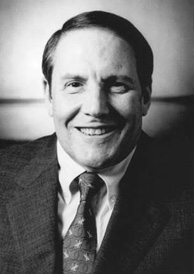 Mr. Legum is president and chief executive officer of the Park Circle Motor Company, a holding company. Previously he served as president and chief executive officer of Legum Chevrolet/Nissan and the Westminster Motor Company. He is a member of the board of the Baltimore Museum of Art, serves on the board of Johns Hopkins Medicine, and is a member of the Wilmer Advisory Council. Mr. Legum’s first association with Hopkins was as a lay member of the Institutional Review Board for Human Subjects Research at the Hopkins Bayview Medical Center. He has served as treasurer of the Park School, vice president of the Associated Placement Bureau, and a trustee of both the Associated Jewish Charities of Baltimore and the Baltimore Hebrew Congregation.
Mr. Legum is president and chief executive officer of the Park Circle Motor Company, a holding company. Previously he served as president and chief executive officer of Legum Chevrolet/Nissan and the Westminster Motor Company. He is a member of the board of the Baltimore Museum of Art, serves on the board of Johns Hopkins Medicine, and is a member of the Wilmer Advisory Council. Mr. Legum’s first association with Hopkins was as a lay member of the Institutional Review Board for Human Subjects Research at the Hopkins Bayview Medical Center. He has served as treasurer of the Park School, vice president of the Associated Placement Bureau, and a trustee of both the Associated Jewish Charities of Baltimore and the Baltimore Hebrew Congregation.
“I don’t know what tomorrow will bring, but I do know that I have done something very important for my daughter–and for all women–and this gives me the strength to cope with uncertainty.”
-Harriet Legum
Daniel Nathans Directorship of the Department of Molecular Biology and Genetics and Professorship in Molecular Biology and Genetics
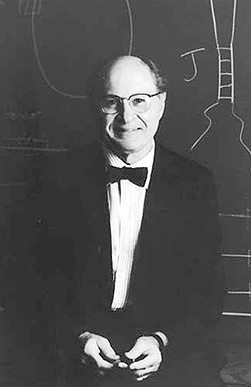 DANIEL NATHANS won the Nobel Prize in medicine in 1978, sharing the honor with his colleague, fellow Hopkins professor Hamilton O. Smith, Med 1956, and Swiss microbiologist Werner M. Arber. Dr. Nathans earned the high honor for his contributions to the discovery and use of a restriction enzyme as “biochemical scissors” to break apart and analyze DNA. This research paved the way for the entire field of genetic engineering and helped launch the biotechnology revolution. In 1993, he received the nation’s highest scientific award, the National Medal of Science.
DANIEL NATHANS won the Nobel Prize in medicine in 1978, sharing the honor with his colleague, fellow Hopkins professor Hamilton O. Smith, Med 1956, and Swiss microbiologist Werner M. Arber. Dr. Nathans earned the high honor for his contributions to the discovery and use of a restriction enzyme as “biochemical scissors” to break apart and analyze DNA. This research paved the way for the entire field of genetic engineering and helped launch the biotechnology revolution. In 1993, he received the nation’s highest scientific award, the National Medal of Science.
Dr. Nathans joined the faculty in 1962 and went on to direct the Department of Microbiology, later renamed the Department of Molecular Biology and Genetics. He served as interim president of the university from 1995 to 1996. Dr. Nathans, who died in 1999, was a distinguished scientist and a beloved teacher and mentor.
“…Remember to care for the whole person. Medicine is a noble profession. It’s much more than applied science, and it is much more than the bottom line.”
-Daniel Nathans
Philip Bard Directorship in the Department of Physiology
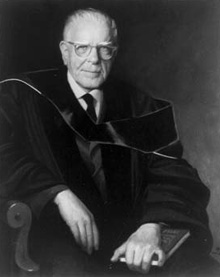 PHILIP BARD joined the faculty as professor of physiology in 1933. In the course of his 31-year career at Hopkins, Dr. Bard went on to lead his department, serve for four years as dean of the School of Medicine, and win countless honors and awards in recognition of his important research in neurophysiology. Dr. Bard was a member of the National Academy of Sciences, the American Philosophical Society (of which he served as president) and–though he was not a physician–the Association of American Physicians. He was editor of Physiology in Modern Medicine through four editions and was awarded many honorary degrees, including one from Johns Hopkins in 1968. Dr. Bard, a beloved teacher, retired as head of his department in 1964.
PHILIP BARD joined the faculty as professor of physiology in 1933. In the course of his 31-year career at Hopkins, Dr. Bard went on to lead his department, serve for four years as dean of the School of Medicine, and win countless honors and awards in recognition of his important research in neurophysiology. Dr. Bard was a member of the National Academy of Sciences, the American Philosophical Society (of which he served as president) and–though he was not a physician–the Association of American Physicians. He was editor of Physiology in Modern Medicine through four editions and was awarded many honorary degrees, including one from Johns Hopkins in 1968. Dr. Bard, a beloved teacher, retired as head of his department in 1964.
Vincent L. Gott Professorship
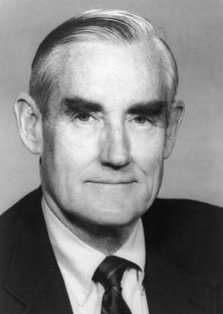 VINCENT L. GOTT is a skilled researcher and gifted surgeon and led the Division of Cardiac Surgery for many years. In 1969, with Hopkins surgeon Harvey Bender, Dr. Gott performed the first heart transplant at the hospital. During his more than 35 years with the university, he has helped to train more than 50 cardiac surgeons and influenced the lives of countless other physicians and patients.
VINCENT L. GOTT is a skilled researcher and gifted surgeon and led the Division of Cardiac Surgery for many years. In 1969, with Hopkins surgeon Harvey Bender, Dr. Gott performed the first heart transplant at the hospital. During his more than 35 years with the university, he has helped to train more than 50 cardiac surgeons and influenced the lives of countless other physicians and patients.
Dr. Gott was a primary researcher in the development of the pacemaker, as well as the co-inventor of the Gott-Daggett Valve and the Gott Shunt. In conjunction with his clinical interest in Marfan Syndrome, he has conducted a record-setting 150 aortic and root replacements. Dr. Gott co-directed the Broccoli Center for Aortic Diseases. He retired from active cardiac surgery in 1994; in 2008 he was appointed professor emeritus of surgery.
Nicholas J. Fortuin, M.D. Professorship in Cardiology
 NICHOLAS J. FORTUIN, MD, interned at Johns Hopkins Osler Medical Service in 1965, then entered fellowship training in cardiovascular medicine under Richard Ross, conducting research involving new concepts in the distribution of blood flow in heart muscle. He was drafted into the U.S. Public Health Service, assigned to the University of North Carolina School of Medicine to conduct research on the effects of air pollution on the heart. While there he employed the new technique of ultrasound to study heart function. In 1971 he returned to Hopkins, rising through the faculty ranks to professor of medicine in 1986. During his early faculty years he developed the first laboratory of echocardiography at Johns Hopkins, and promoted the use of this important technique in clinical cardiology.
NICHOLAS J. FORTUIN, MD, interned at Johns Hopkins Osler Medical Service in 1965, then entered fellowship training in cardiovascular medicine under Richard Ross, conducting research involving new concepts in the distribution of blood flow in heart muscle. He was drafted into the U.S. Public Health Service, assigned to the University of North Carolina School of Medicine to conduct research on the effects of air pollution on the heart. While there he employed the new technique of ultrasound to study heart function. In 1971 he returned to Hopkins, rising through the faculty ranks to professor of medicine in 1986. During his early faculty years he developed the first laboratory of echocardiography at Johns Hopkins, and promoted the use of this important technique in clinical cardiology.
Dr. Fortuin’s commitment to medical education at all levels was a strong feature of his professional life at Johns Hopkins. With colleagues Thomas Traill and Lowell Maughan, he organized and ran the annual “Topics in Cardiovascular Medicine” course for practitioners from outside the institution. He served as a member of the board of trustees of The Johns Hopkins Hospital for over 20 years, and also was a member of the Johns Hopkins Medicine Board. He was president of the School of Nursing Board for a two-year period. Dr. Fortuin passed away in 2010.
Philip A. Tumulty Chair
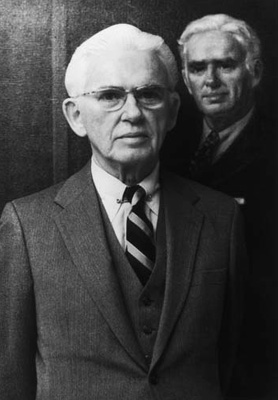 PHILIP A. TUMULTY, Med 1940, served on the faculty for nearly 50 years, heading the Department of Medicine’s inpatient and outpatient services for 17 years and helping to found the Division of Internal Medicine, of which he was the first director. Known as an unequaled diagnostician and a champion of the humanistic approach to medicine, Dr. Tumulty focused his scholarship on the study of the natural history of disease. The author of many clinical papers on infectious diseases, he also wrote The Effective Clinician, His Methods and Approaches to Diagnosis and Care. In honor of his excellent teaching, research, and patient care, he received many awards and much recognition, including election to the Association of American Physicians. Before his death in 1989, Dr. Tumulty was honored by colleagues and patients who established the Tumulty Endowment Fund for the support of internal medicine, an area Dr. Tumulty felt important in an age of increasing specialization. (He is pictured in front of his portrait.)
PHILIP A. TUMULTY, Med 1940, served on the faculty for nearly 50 years, heading the Department of Medicine’s inpatient and outpatient services for 17 years and helping to found the Division of Internal Medicine, of which he was the first director. Known as an unequaled diagnostician and a champion of the humanistic approach to medicine, Dr. Tumulty focused his scholarship on the study of the natural history of disease. The author of many clinical papers on infectious diseases, he also wrote The Effective Clinician, His Methods and Approaches to Diagnosis and Care. In honor of his excellent teaching, research, and patient care, he received many awards and much recognition, including election to the Association of American Physicians. Before his death in 1989, Dr. Tumulty was honored by colleagues and patients who established the Tumulty Endowment Fund for the support of internal medicine, an area Dr. Tumulty felt important in an age of increasing specialization. (He is pictured in front of his portrait.)
HELENA HENDRICKSON left a substantial bequest in 1997 to supplement the endowment of this professorship. Miss Hendrickson was a teacher and a biochemist with the U.S. Army, continuing her employment there as a civilian after retiring from military service.
Dr. Mary Betty Stevens Professorship in Rheumatology
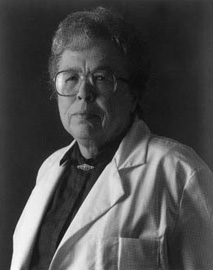 MARY BETTY STEVENS, Med 1955, known to many as “Marty,” trained at Hopkins and joined the faculty in 1960. She went on to become director of the Division of Rheumatology–the first woman appointed to head a Hopkins medicine division–and also director of rheumatology at Good Samaritan Hospital. Known as one of the world’s foremost authorities on arthritis, Dr. Stevens directed the Arthritis Center at Hopkins. She also developed the Hopkins-Good Samaritan Rheumatic Disease Unit, which became renowned for clinical research on lupus and vasculitis. Widely admired as a devoted physician, a masterful clinician, and an inspirational teacher, Dr. Stevens attracted hundreds of medical students, residents, and fellows to study at her side.
MARY BETTY STEVENS, Med 1955, known to many as “Marty,” trained at Hopkins and joined the faculty in 1960. She went on to become director of the Division of Rheumatology–the first woman appointed to head a Hopkins medicine division–and also director of rheumatology at Good Samaritan Hospital. Known as one of the world’s foremost authorities on arthritis, Dr. Stevens directed the Arthritis Center at Hopkins. She also developed the Hopkins-Good Samaritan Rheumatic Disease Unit, which became renowned for clinical research on lupus and vasculitis. Widely admired as a devoted physician, a masterful clinician, and an inspirational teacher, Dr. Stevens attracted hundreds of medical students, residents, and fellows to study at her side.
In 1991, three years before her death, she received the Distinguished Rheumatologist Award from the American College of Rheumatology. The recipient of many other awards and honors, Dr. Stevens particularly cherished the George J. Stuart Award she was given in 1971 for excellence in clinical teaching. In addition to this professorship, the Mary Betty Stevens Rheumatology Fellowship and the Mary Betty Stevens Lectureship also honor her memory.